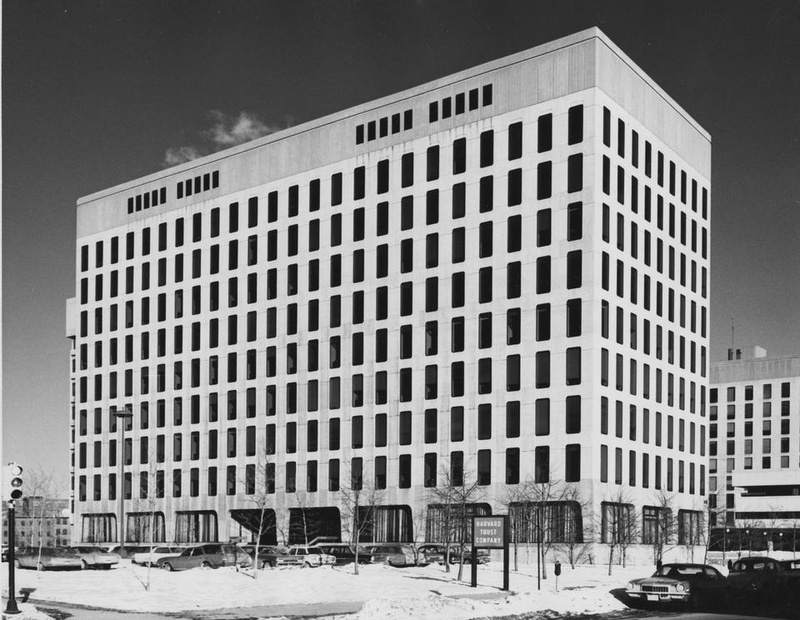
Tech Square completed, january 1971. Courtesy of the Cambridge Redevelopment Authority collection, Cambridge Historical Commission
The Cambridge of the 1950s was one of pastel homes alongside abandoned parking lots and a winding Charles River polluted with industrial run-off.
Although Cambridge is now a hub for technology and research, in the era after World War II but before the ’60s, the city was home to declining heavy industry and oil reserve tanks.
“It was an industrial wasteland,” says Joseph Tulimeiri, executive director of the Cambridge Redevelopment Authority. “Just about every obnoxious industrial use that you can think of was in this area.”
As a result, people moved out, and after the end of WWII the city experienced a decline in population and industry.
In an attempt to counteract Cambridge’s deterioration, the city administration created the Cambridge Redevelopment Authority in the early ’60s, marking the beginning of urban renewal in Cambridge.
The end of WWII “coincided with the notion that you can and should reinvigorate urban context in very large parcels,” says Cambridge City Councilor Sam Seidel.
Following zoning amendments passed in the early ’60s, which permitted the construction of buildings by MIT and other organizations, Cambridge began its transformation from a decrepit industrial city to a revived research-focused one.
REVITALIZATION BEGINS
In response to the downward spiral in Cambridge following WWII, the Cambridge Redevelopment Authority approved the construction of Technology Square, built under the advising of a real estate agency, Cabot, Cabot & Forbes, Inc, hired by MIT.
The city cleared off some land and built offices, research labs, and spaces for small businesses in the Kendall and Central Square areas.
The construction was intended to make the square “a much more attractive neighborhood for everybody to walk around,” Tulimeiri says.
The square was also intended to house the National Aeronautics and Space Administration (NASA) mission control center, considered the epitome of technological advancement at the time.
By 1965, NASA had been granted permission to use nearly a third of the cleared property in Technology Square. But when President John F. Kennedy ’40 was assassinated, Technology Square’s face shifted.
“Cambridge, Mass. was Kennedy’s choice for NASA,” Seidel explains. But President Lyndon B. Johnson, Kennedy’s successor, moved the NASA base to Houston, Texas, Johnson’s home state, leaving Technology Square with a large, vacated tract of land which was filled by other tenants.
Even though NASA’s intended entry was thwarted, other urban renewal projects spearheaded by the city revitalized Cambridge. According to Tulimeiri, the construction successfully improved the city’s tax income, job offerings, and aesthetics, and Cambridge became a more popular place to live.
Read more in News
Pill’s Approval Portends Cultural Shift














